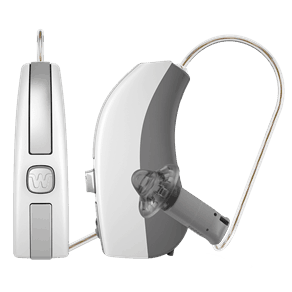How to Clean Hearing Aids
In general, the principles of keeping hearing aids clean are the same for all styles: keep them dry and clear of wax and other obstructions. There are also a few things specific to each style.
If you regularly use aerosols such as hairspray, then it’s best to do your hair before putting on your hearing aids. I have seen some hearing aids that sound dead after a few weeks, all because the microphones are covered in hairspray!
How often you need to clean your hearing aids depends on your environment and how much wax you produce. Many hearing aids have a changeable wax filter on the part that goes inside your ear. How to change the filter can vary a bit from model to model; usually your provider will supply you with some filters and show you how to change them.
Generally speaking, all hearing aids should be inspected and cleaned nightly, although filters are usually only changed every few weeks. Again, this will depend on how much earwax you produce.
Tip: If you find your hearing aids getting clogged up for no reason, take your audiologist through your daily routine. They might be able to identify the cause.
Cleaning In-the-Ear (Custom) Hearing Aids
To clean a custom hearing aid, take a look at the end that goes into your ear canal first, closest to the eardrum. This is where the wax filter will be. If the filter looks clogged, go ahead and change it. You can use alcohol-free cleaning made for hearing aids, in addition to spray or wipes on the body of the aid. If you don’t have these, a dry, soft cloth can remove any wax or debris from the body.
Additionally, use your brush to clean off the mics. This is the part where the sound enters the aids, and it will be closest to the outside of your ear when the aid is worn. Hold the aids with the mics facing down towards the ground, and brush them off. You might be surprised to see how much dust you see come off them!
Cleaning Tip: Holding your hearing aids with the mics sideways or facing down while you brush will ensure you brush the dust off, rather than pushing it into the mic ports and clogging them more.
Cleaning BTE and Thin Tube Hearing Aids
BTE and thin tube hearing aids don’t usually have a wax filter, but they can get wax trapped in the tube. If you see wax trapped in the tube, remove the dome at the end of the hearing aids. If you have a mold, you should be ok to keep it on. Unscrew the tube from the body of the aid, then run the tube pipe cleaner or cleaning floss through it. It’s important to remove the tube because if you just thread the cleaning line up into the tube while it’s still attached, you could push the wax into the hearing aids.
The outside of molds can be cleaned with a cloth or hearing aid safe wipes or spray. After you clean the mics off (the part where the sound goes in behind the ears) with a brush, screw the tube back on the aid. The tube doesn’t need to be removed and cleaned daily, but it’s a good idea to check it each night when you put it away.
Careful Cleaning: Always clean your aids one at a time so you don’t put the wrong tube and mold back on the aid.
Cleaning RIC Hearing Aids
To clean RIC hearing aids, begin by taking off the dome and inspecting the filter. If it has wax in it, then it should be changed. If your RICs have molds you might not need or be able to remove them to change the filter. After changing the filter, clean the body of the aid with a cloth, and brush off the microphones with a brush.





